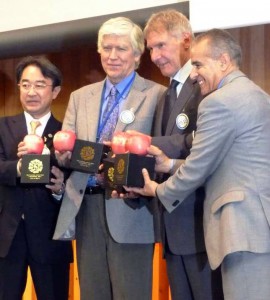The abstract of a new paper in PNAS is fascinating. The paper is called Risk of collective failure provides an escape from the tragedy of the commons, and what it seems to be saying is that a small group, which will pay dearly for failure, is more likely to manage a commons successfully. This seems deeply obvious. Garrett Hardin himself said that one of his biggest tragedies was the failure to call his ground-breaking 1968 Science paper The Tragedy of the Mismanaged Commons, for there is nothing inherently tragic in the idea of a commons. 1 Exclusive community rights, and shame, he reckoned, were usually enough to keep a commons sustainable. So I’m probably missing the point, and I currently don’t have access to the full paper to find out what Santos & Pacheco, authors of the paper, are saying in full. Take this bit from the abstract, for example:
We also offer insights on the scale at which public goods problems of cooperation are best solved. Instead of large-scale endeavors involving most of the population, which as we argue, may be counterproductive to achieve cooperation, the joint combination of local agreements within groups that are small compared with the population at risk is prone to significantly raise the probability of success.
Does this mean that we should leave it to politicians or professional negotiators to hammer out global agreements? Surely not as long as they require our approval, or (financial) support. And how might the conclusions of Santos & Pacheco apply to, say, negotiating access to the global “commons” of genetic resources? Answers on a postcard please.
 So word has it that the Convention on Biological Diversity people will be handing out apples (or models of apples) with the logo of the
So word has it that the Convention on Biological Diversity people will be handing out apples (or models of apples) with the logo of the  The
The